A bright garden can be an incredibly fulfilling activity because it gives one a feel of natural beauty, aesthetic look, and a chance to have personal satisfaction with home-grown crops. For beginners in gardening, the idea to begin with seeds can appear intimidating. What is offered here includes delicious herbs, stunning flowers that produce beautiful blossoms, and even plants whose medicinal properties are well known. The world of seed-starting allows you to embark on a pleasing journey towards building up your own garden, that is, vibrant and operational in nature.
Pros of Planting Your Garden from Seeds
It is amazing to see how a small seed can grow to become a beautiful plant and give seeds to continue the process. But beyond the charm, there are several advantages to starting your garden from seeds instead of buying seedlings:
- Cost-Effective: Bought seeds are cheaper as compared to purchased individual seedlings, due to the fact that they allow one to grow many trees at an instance. They can contain multiple seeds that can produce dozens of plants, so this can be a much better value for cultivating your garden.
- Diverse Selection: The range of seeds available online or through a mail-order catalog is nearly beyond counting, so it provides a diverse range of options of seeds, which one can grow according to their preferences.
- Educational Opportunity: Growing various seeds is a good way to understand similar biology of plants as well as their roles in the environment. However, this is an ideal job for children and helps them develop an interest in the nature around them.
- Seed Saving: Some of the plant varieties are self-seeding especially those with an open-pollination feature, which enables them to produce seeds that you can preserve for future planting. This increases self-reliance and gives you an opportunity to grow crops that specifically suit each area, in a particular interval of time.
10 Easy-to-Grow Seeds for Your Garden
1. Ajwain
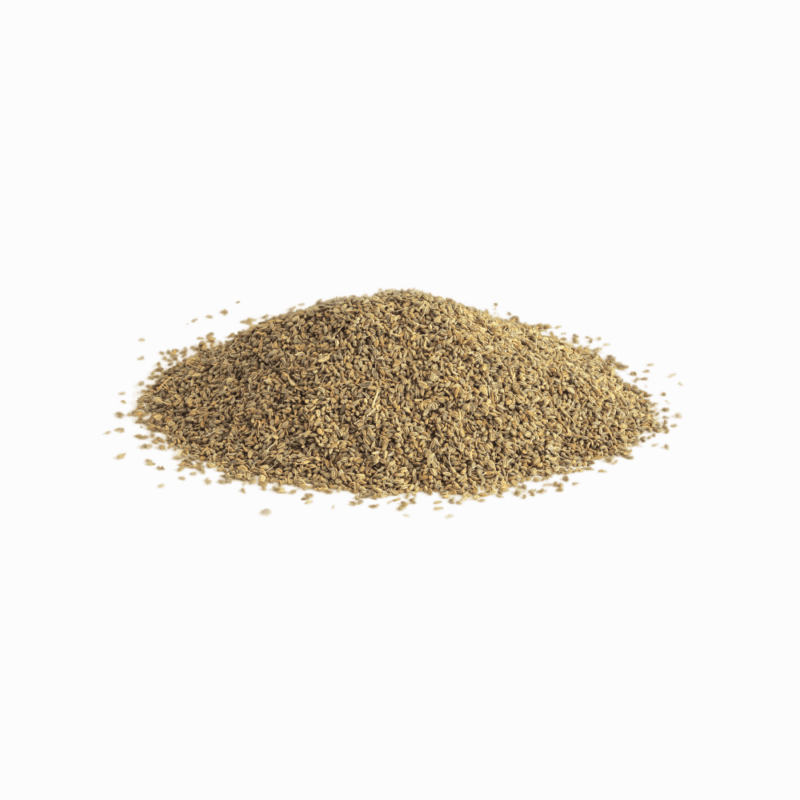
Often overlooked among the other spices, ajwain seeds (Carum copticum) also referred to as carom seeds or bishop’s weed, have many health benefits and are used in many cuisines. Originating from the Apiaceae family just like cumin and fennel, ajwain is characterized by its special taste and severe advantages.
Growing Ajwain Seeds:
On the brighter side, it is good news that ajwain is an herb that can be easily grown from seeds. Here’s a quick guide:
- Planting: The suggested climatic requirements for ajwain are: location with proper soil drainage and the plant must be situated in an area where it is exposed fully to the sun. Seeds can be directly sown into your garden once the risk of frost is gone. Seeds to space should be about 6 inches apart.
- Care: Ajwain requires minimal care. Water regularly during germination and hot spells, but allow the soil to dry slightly between waterings.
- Harvest: Ajwain leaves can be harvested throughout the growing season. The seeds are ready for harvest when they turn brown and have a strong aroma (around 100 days after planting).
Uses of Ajwain seeds:
- Digestive Aid: Ajwain is an aromatic fumigant compound that is used in folk medicine to release a gas that relieves bloating and indigestion issues.
- Respiratory Relief: Ajwain has the potential ability to provide relief from inflammation and therefore, may be effective in treating coughs and colds.
- Pain Relief: The basic component is that it might help in alleviating some headache ailments and also the discomfort in menstrual aches.
- Antioxidant Properties: The traditional use of the ajwain suggests that it may serve as a great source of antioxidants, which is an important element in fighting cell damage.
2. Alyssum seeds
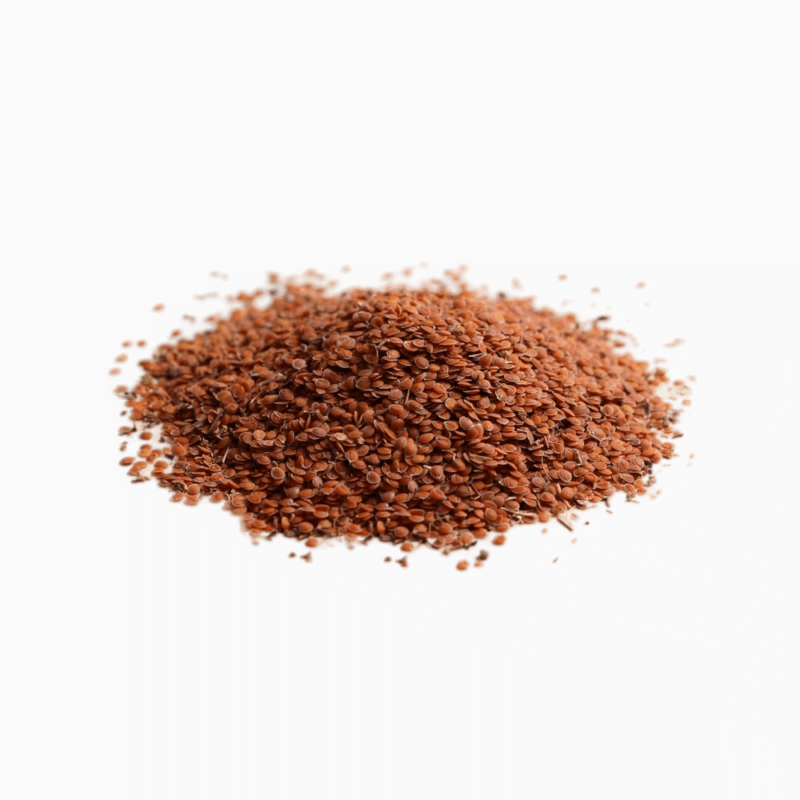
Sweet alyssum or Alyssum genus plant species belongs to Lobularia maritima, which is a pretty flowering plant that makes a beautiful addition to your garden when it spills over with white-scented flowers. This low-maintenance beauty can give your home the perfect detail that everyone, from the first time gardener to the gardener with over thirty years of experience, will appreciate.
Growing Alyssum seeds
In addition to the informational video and its flowers, there is one more benefit that can be derived from this type of alyssum: it is rather easy to cultivate. Here’s how to get started with alyssum seeds: Here is how to reap with alyssum seeds:
- Planting Time: Alyssum is categorized as a cool-season flower. This plant can also be grown directly in the garden throughout early spring or during the fall especially in areas that experience relatively mild winter.
- Location: Alyssum thrives in full sun and well-drained soil. Sandy soils are considered to be ideal, but alyssum can adapt to average garden soil with good drainage.
- Sowing: Scatter seeds thinly over the prepared soil surface and gently press them down. You don’t need to cover them with soil as alyssum seeds prefer light for germination.
- Watering: For germination, it is important that the seed should be immersed in water for some time, but it is not necessary that during the germination process, the soil should be boggy and sodden.
- Germination: Conditions that are ideal for germinating Alyssum seeds are a cool temperature and a week to two weeks depending on a specific variety.
- Thinning: Once the seedlings establish themselves, thin them to about 6-8 inches apart to allow for proper growth.
Uses of Alyssum seeds
- Pollinator Paradise: Alyssum is an outstanding plant that also has flowers that are scented and can lure butterflies and bees along with other pollinators. These beneficial insects help to maintain proper alyssum and flower reproduction, as well as, in other flowering plants in your garden.
- Pest Repellent Power: With regards to this, there are also flowers that give off certain odours to help ward off certain pests that are usually common in the garden for example cabbage moths. This makes this a natural way of managing pests, something that is quite effective in reducing high pest pressure in a given area.
- Companion Planting Champion: It is also good to try and grow alyssum among your vegetables; for instance, tomato or pepper plants. However, the aroma from the flowers may act as a repellent to the pests and other destructive bugs, and, at the same time, the flowers may attract friendly insects to help get rid of other pests/fungi which are hazardous plant insects in a garden.
3. Anise

Anise seeds, which have a unique licorice taste, are useful to have when you are planning your herb garden. However, this little piece contains much more than a taste of a gourmet meal. Anise is quite an easy plant to grow by seeds and can be used both for culinary as well as medicinal purposes.
Growing Anise seeds
Growing anise from seed can be a rewarding experience, perfect for beginner gardeners:
- Planting Time: Sow seeds directly outdoors after the winter has passed.
- Location: It requires a well-dried place and grows best in a sunny afternoon and it can be propagated through seeds.
- Sowing: Plant seeds about 3/4 inch keeping them in a 6 inches interval.
- Watering: New seeds should be watered well through the germination process but do not water them too much.
- Germination: They should germinate within about 10 to 14 days depending on the type of seed coat.
- Harvest: It is best to harvest anise leaves during the growing period using sharp knives or scissors. Wheat seeds are ripe and are fit for harvesting when they turn brown and dry (at 120 days of planting).
Uses of Anise seeds
- Baked Goods: The herb anise is being used in biscotti, licorice candies, and some European breads.
- Sweet and Savory Dishes: Anise seeds either on their own or ground up, can complement the tastes of stews, sausages, and curries.
- Digestive Aid: Anise is a carminative and is used in the treatment of conditions like gas, bloating, or even the common digestive disorder.
- Respiratory Relief: Because of the anti-inflammatory properties one can use it for certain types of coughs or colds expecting only a minor alleviation.
- Soothing Properties: Another example of herbal medicine is anise tea and it can be used to treat sore throat as well as coughs.
4. Caraway seeds
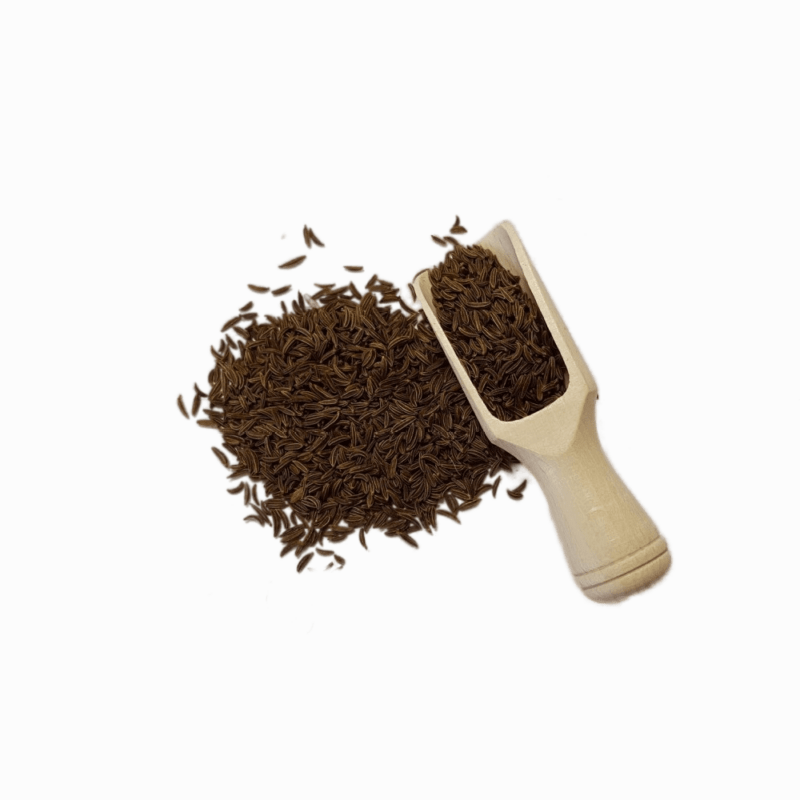
Caraway seeds are small colourful spiced endowed with a taste of anise and earth; it is used in almost all types of food preparation. This versatile herb has much more to offer than the culinary attribute it possesses. In fact, caraway is very simple to raise from seeds, which makes it possible to have beautiful garden.
Growing Caraway seeds
Caraway is an herb that is used in culinary and medicinal applications It belongs to the Carum genus and is scientifically identified as Carum carvi and is a biennial shrub that originated in Europe and West Asia.
Even though it may take nearly 2 years to produce seeds, the attractive feathery foliage is available already at the end of the first year. Here’s how to cultivate caraway from seed: Here’s how to cultivate caraway from seed:
- Planting Time: Sow seeds directly outdoors in early spring or fall.
- Location: Caraway prefers cool-season weather and full sun.
- Sowing: Scatter seeds thinly over the soil surface and lightly press them down.
- Watering: Keep the soil consistently moist during germination but avoid overwatering.
- Germination: Expect seedlings to emerge within 10-14 days.
- Harvest: Caraway leaves can be used throughout the season. Seeds are ready for harvest when they turn brown and dry (around 100 days after planting).
Uses of Caraway seeds
- Weight Management: Caraway aids in managing weight due to its ability to create a sense of fullness.
- Digestive Aid: Caraway can serve as a digestive aid because it has some of the carminative properties associated with anise which will prevent bloating when taken, hence, preventing indigestion, in general.
- Antioxidant Power: The body can be protected from cell damage by consuming caraway since it contains antioxidants.
- European Bread: Any mention of European breads would be incomplete without acknowledging that caraway is one of the essentials for making rye breads, pumpernickels, some types of seed crackers among others alike.
- Sausages and Cheeses: Caraway is used in cheeses and sausages as an ingredient.
5. Cumin seeds
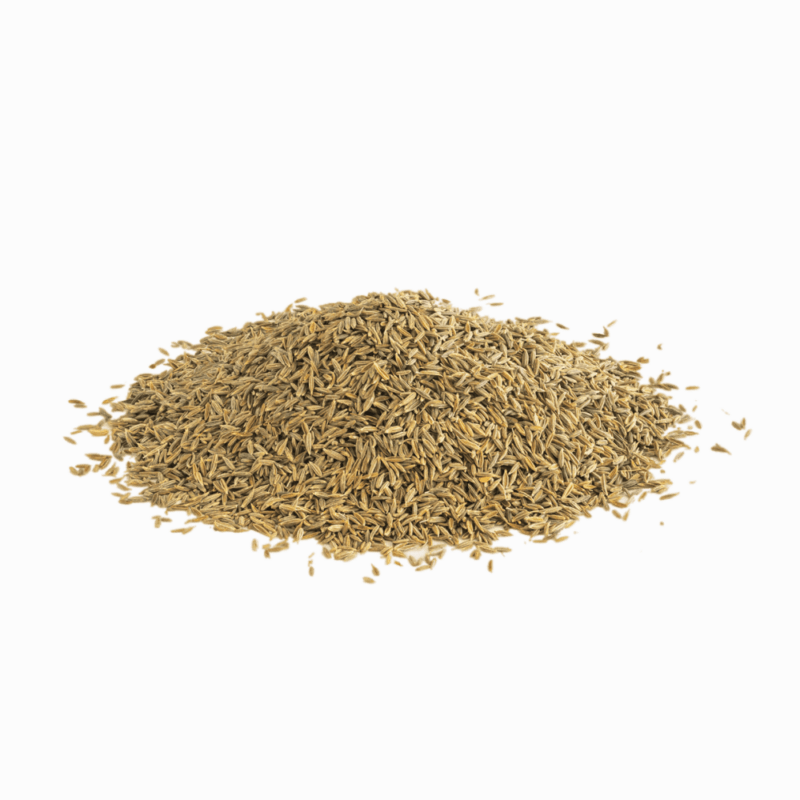
Cumin seeds have an earthy, warm aroma and have a slightly bitter taste that makes it a key ingredient in so many global cuisines. Whether it’s Indian curries or Mexican chili, adding a little ground cumin to your recipe will bring a comforting depth of flavour that belies in its simplicity. But cumin’s talents extend far beyond the kitchen as it’s one of the easiest crops you can grow from seed and its pretty, slightly palpable, floral burst makes it attractive as well as useful addition to the garden.
Growing Cumin seeds
Cumin (Cuminum cyminum) is an annual herb native to the Mediterranean region and Southwest Asia. Here’s a quick guide to cultivating your own cumin bounty:
- Planting Time: Sow seeds directly outdoors after the danger of frost has passed and the soil has warmed.
- Location: Cumin thrives in full sun and well-drained soil. Hot, dry climates are ideal for optimal seed production.
- Sowing: Sow seeds about ½ inch deep and space them 4-6 inches apart.
- Watering: Water regularly during germination, especially in hot weather, but allow the soil to dry slightly between waterings. Cumin is fairly drought-tolerant once established.
- Germination: Expect seedlings to emerge within 10-14 days.
- Harvest: Cumin seeds are ready for harvest when the seed heads turn brown and dry (around 100 days after planting).
Uses of Cumin seeds
- Indian Cuisine: Cumin is a key ingredient in garam masala, a warming spice blend used in curries, dals (lentil stews), and countless other Indian dishes.
- Latin American Delights: Cumin is a staple spice in chili powder, adding its earthy character to Mexican chilis, tacos, and enchiladas.
- Global Flavors: Cumin transcends borders, adding its unique touch to Middle Eastern stews, North African tagines, and even some European breads.
- Blood Sugar Control: Studies suggests that, cumin may help in regulating blood sugar levels.
- Antioxidant Properties: Cumin contains antioxidants that may help protect the body from cell damage.
6. Dill seeds
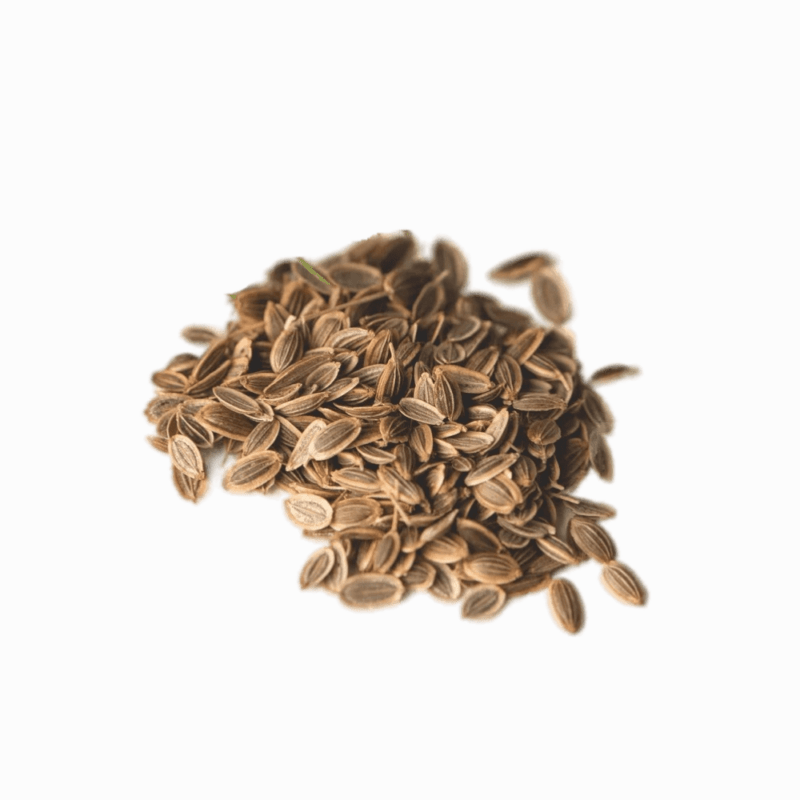
Dill, with its feathery green leaves and bright yellow flowers, is a beloved herb in many kitchens. Dill also produces tiny seeds that pack a powerful punch of flavour. Even more exciting, cultivating dill from seed is a breeze, offering a pleasant experience for gardeners of all levels.
Growing Dill seeds
Dill (Anethum graveolens) is an annual herb native to Eurasia. Growing dill from seed is a fantastic way to ensure a fresh supply of this versatile herb throughout the growing season:
- Planting Time: Sow dill seeds directly outdoors after the winters have passed. You can also start from indoors a few weeks before the last frost for an earlier harvest.
- Location: Dill thrives in full sun and well-drained soil. Try to aim for at least 6-8 hours of direct sunlight daily.
- Sowing: Sow seeds about ¼ inch deep and space them 6-8 inches apart.
- Watering: Keep the soil consistently moist during germination.
- Germination: Expect seedlings to emerge within 10-14 days.
- Harvest: Dill leaves can be harvested throughout the growing season. Seeds are ready for harvest when the flower heads turn brown and dry (around 50-60 days after planting).
Uses of Dill seeds
- Warmer and More Intense: Unlike the fresh, grassy notes of dill leaves, dill seeds boast a warmer, more intense flavour with a hint of citrus and bitterness.
- Culinary Applications: Dill seeds are a key ingredient in pickling brine, as it adds depth and complexity to pickled cucumbers, onions, and other vegetables.
- Spice Blends: Ground dill seeds are used in some European spice blends like gravlax, adding a touch of warmth and citrus to cure some fish dishes.
- Beyond Savory: Dill seeds can even be used in sweet dishes like cookies or yogurt, for a delightful twist.
- Digestive Aid: Similar to other carminative herbs, dill seeds may help in relieving bloating and indigestion.
- Antioxidant Power: Dill seeds contain antioxidants that may help protect the body from cell damage.
7. Milk thistle
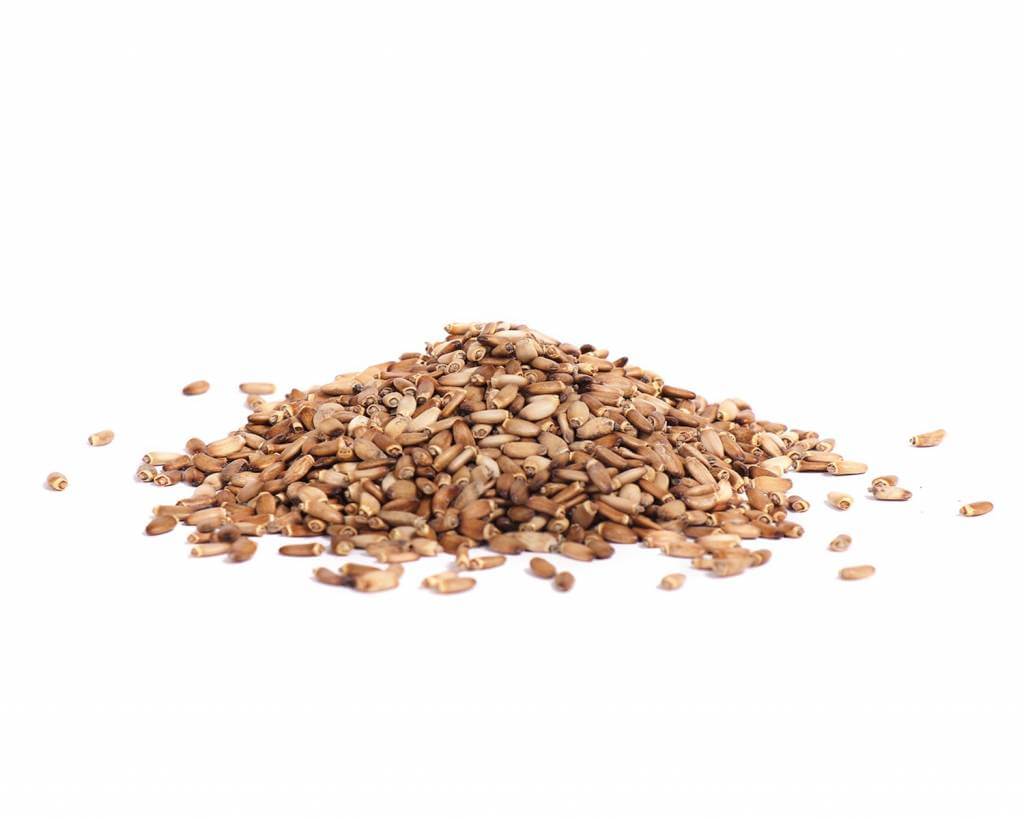
Milk thistle, with its spiky green leaves and vibrant purple flowers, might seem intimidating at first glance, but beneath this prickly exterior lies a treasure trove of potential benefits. Not only is milk thistle a beautiful flowering plant, but it’s also surprisingly easy to grow from seed and offers a range of uses in the natural world.
Growing Milk thistle
Milk thistle (Silybum marianum) is a biennial herb native to the Mediterranean region. While it takes two years to produce mature flowers and seeds, you can enjoy its architectural beauty throughout its growth cycle:
- Planting Time: Milk thistle can be grown as an annual or biennial depending on the climate. Sow seeds directly outdoors in early spring (for an annual harvest) or late summer/fall (for a biennial harvest).
- Location: Milk thistle thrives in full sun and well-drained soil. It’s a tolerant plant and can adapt to a range of soil conditions, but good drainage is the key.
- Sowing: Sow seeds about ½ inch deep and space them 18-24 inches apart. Milk thistle has a taproot, so transplanting seedlings can be disruptive, hence direct sowing is recommended.
- Watering: Water regularly during germination, especially in hot weather. Once established, milk thistle is quite drought-tolerant.
- Germination: Expect seedlings to emerge within 10-14 days.
- Harvest: For annual plantings, you can harvest the leaves in the first year. In the second year, the mature flower heads will produce seeds that can be harvested once they turn brown and dry (around 120 days after flowering).
Uses of Milk Thistle
- Supporting Liver Health: Milk thistle seeds contain silymarin, a compound with potential liver-protective properties.
- Wildlife Haven: The spiky leaves and seed heads provide shelter and food for butterflies, birds, and other creatures.
- Natural Dye: The leaves of milk thistle can be used to create a beautiful green natural dye.
8. Savory
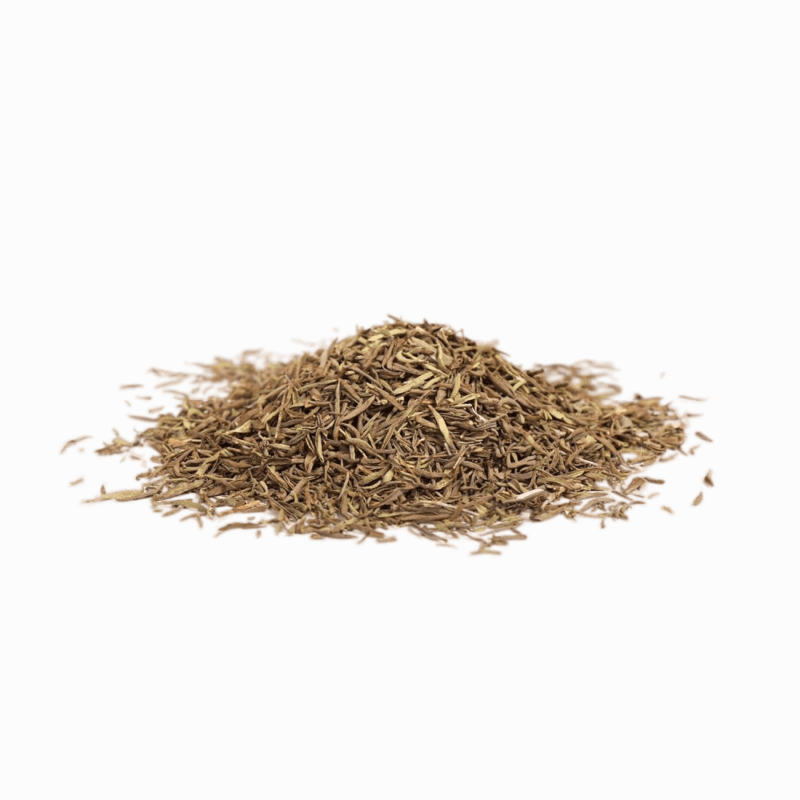
With its aromatic leaves and warm-peppery flavor, savory is a great culinary treasure mostly found in European and Mediterranean cooking. There are two major types of savory – one-year-old summer savory and perennial winter savory; both types offer a delightful experience to newbies as well as long-time gardeners.
Growing of Savory seeds
- Timing: Start seeds indoors 4-6 weeks before the last frost for an earlier harvest, or sow directly outdoors after the winters have passed.
- Location: Savory thrives in full sun and well-drained soil. Aim for at least 6-8 hours of direct sunlight daily.
- Sowing: Sow seeds about ¼ inch deep and space them 6-8 inches apart.
- Watering: Keep the soil consistently moist during germination, but avoid overwatering.
- Germination: Expect seedlings to emerge within 10-14 days.
- Harvesting: You can start harvesting leaves once the plant reaches about 6 inches tall. Regularly clean off leaves to encourage bushier growth. Summer savory will complete its life cycle in one year, meanwhile winter savory can be harvested throughout the season
Uses of Savory seeds
- Heartwarming Stews and Soups: You can add savory to bean stews, lentil soups, or vegetable broths. It can be used together with other herbs like thyme, rosemary, or bay leaf.
- Roasted Vegetables: Sprinkle some of the herbs on roasted potatoes, carrots, or any other root crops.
- Herb Blends: Dried summer savory is frequently used in blends such as Herbs de Provence to add warmth and complexity.
- Antiseptic Properties: Some studies have indicated that savory may act as an antiseptic.
9. Chamomile
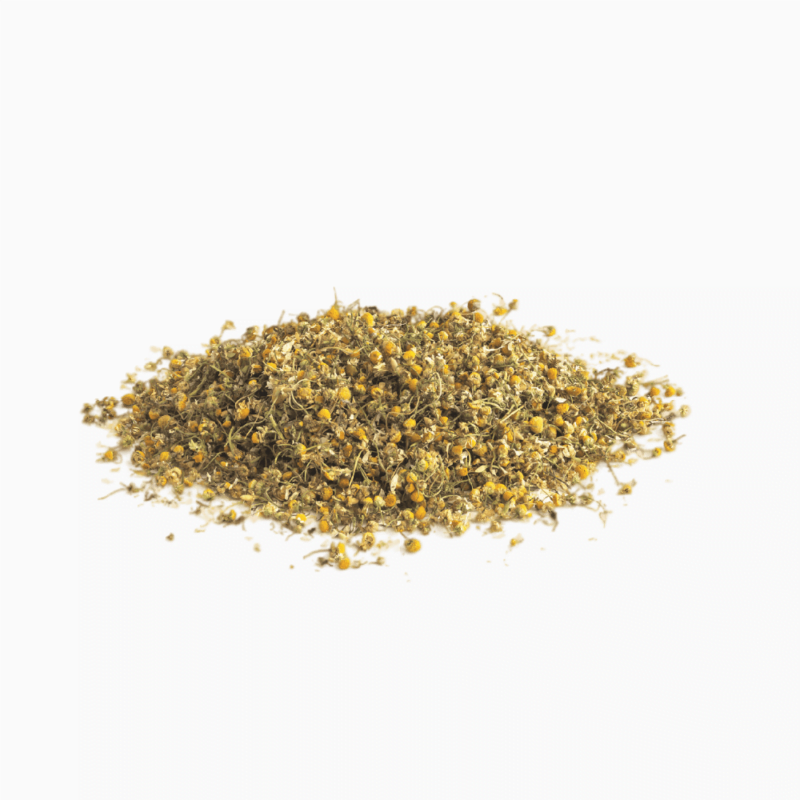
Chamomile, with its daisy-like blooms and calming aroma, is more than just a pretty face in the flower bed. This gentle herb boasts a long history of use in promoting relaxation and overall well-being. Chamomile is surprisingly easy to grow from seed, allowing you to cultivate a little piece of tranquillity right in your own garden.
Growing Chamomile seeds
- Timing: Chamomile thrives in cool weather. Sow seeds directly outdoors in early spring or fall in regions with mild winters.
- Location: Chamomile prefers full sun and well-drained soil. Sandy soils are ideal, but chamomile can adapt to average garden soil with good drainage.
- Sowing: Scatter seeds thinly over the prepared soil surface and gently press them down. You don’t have to cover them with soil as chamomile seeds prefer light for germination.
- Watering: Keep the soil consistently moist during germination.
- Germination: Expect seedlings to grow within 7-14 days.
- Harvesting: Once the flowers mature and the petals begin to droop, you can harvest them for drying.
Uses of Chamomile seeds
- Soothing Tea: The most popular use of chamomile is in herbal tea. Steeping the flowers creates a calming beverage known for promoting relaxation and better sleep.
- Wound Healing: Chamomile has mild anti-inflammatory properties and may aid in wound healing.
- Skin Soother: Chamomile may help soothe irritated skin due to its anti-inflammatory properties. You can use a chamomile compress or can add chamomile tea to your bath.
10. Dried Mint
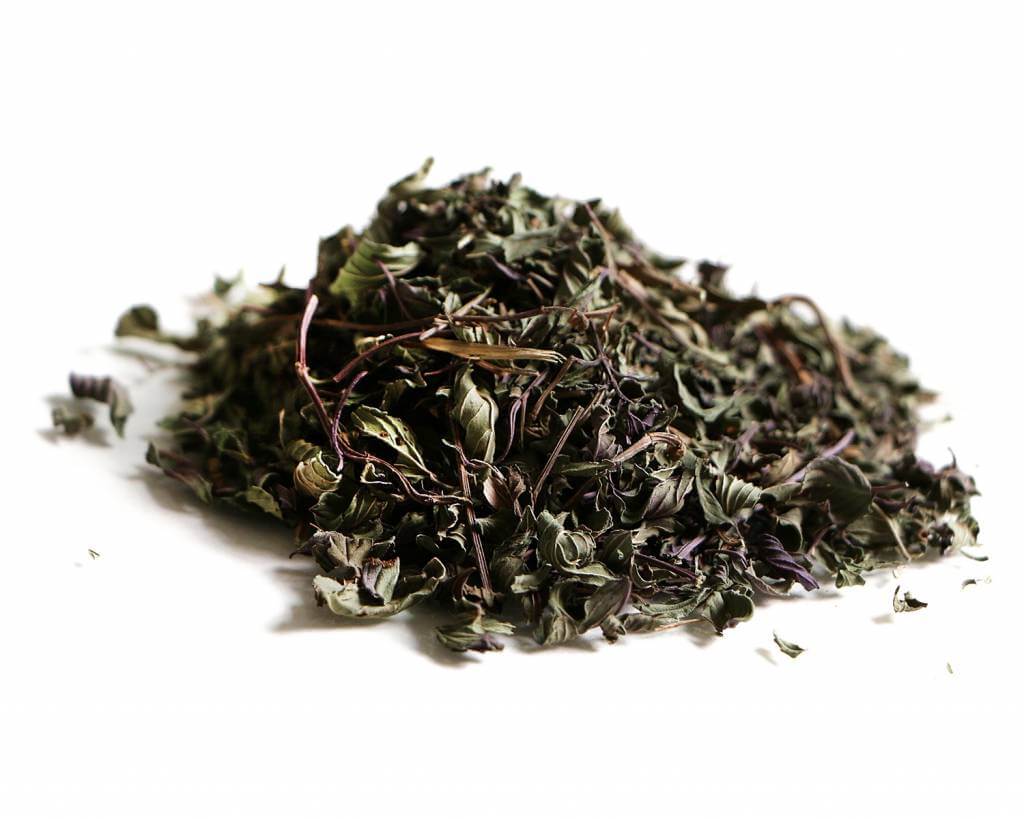
There are many kitchens in the world where dry leaves of mint are highly regarded as part of their staple food items, thus, giving them flavour. Yet this range booster has its way beyond the shelves of a supermarket and into the gardens.
You will be surprised to know how easy it is to grow mint from seed; besides, once you have it, you can cultivate your own stock and enjoy the refreshing fragrance and taste whether fresh or dried.
Growing Dried Mint seeds
- Timing: Sow seeds indoors 6-8 weeks before the last frost for an earlier harvest, or directly outdoors in early spring after the danger of frost has passed.
- Location: Mint thrives in full sun or partial shade and prefers moist, well-drained soil.
- Sowing: Mint seeds are tiny, so scatter them thinly over the soil surface and press them down gently. You don’t need to cover them with soil.
- Watering: Keep the soil consistently moist during germination, but avoid overwatering.
- Germination: Expect seedlings to grow within 10-14 days.
- Harvesting: Once the plant reaches about 6 inches tall, you can start harvesting leaves throughout the growing season.
Uses of Dried Mint seeds
- Potpourri: You can make homemade potpourri kits that have a fresh smell of dried mint leaves.
- Sachet: Put some dried mint leaves in sachets so that your clothes cabinet smells fresh all the time or just repels pests.
- Savory Dishes: Use a pinch of dried mint when roasting vegetables, and you can also add it to potato salad for a nice coolness, or cook lamb dishes with beautiful flavours.
- Beverages: The Moroccan tea ingredient called dried mint is also good for making iced tea and summer cocktails.
- Desserts: Chocolate desserts may gain an unexpected twist with a hint of powdered mint or you can use it in fruit salads too.
Where to Find These Seeds
Look no further than Blumental-Bayern.com if you’re ready to start your gardening journey with these simple-to-grow seeds. This site offers a broad range of top-quality seeds, such as Ajwain, Alyssum, Anise, Caraway, Cumin, Dill, Milk Thistle and Savory, which are suitable for beginners as well as seasoned gardeners. It is easy to buy all you need through their user-friendly interface and convenient order process, so why wait? Buy now and create a vibrant and bountiful garden oasis. To bring your garden dreams to life do not wait any longer, visit Blumental-Bayern.com today and start sowing the seeds of success.
Conclusion
There are so many herbs of which caraway, cumin, dill, milk thistle, savory, chamomile and dragonhead are just a few examples that can easily be grown from seeds thus, enriching your garden as well as kitchen. Each has its own distinctive flavours, many health values and aesthetic attractiveness. By including these versatile plants in your gardening practice, you could have a delightful experience of growing your own ingredients for cooking and drinks and meanwhile, fostering the bond between you and nature through bringing about home-made flavour. So, delve into the realm of seeds; put down your hands on the ground whilst cultivating a piece of culinary and herbal enchantment right at the backyard.
FAQs
Can I grow these seeds indoors, or do I need a garden?
While some seeds may thrive better outdoors, many of the seeds mentioned in the blog can be successfully grown indoors, provided they receive adequate sunlight and care. Consider using pots or containers if you’re limited on outdoor space.
Are these seeds suitable for beginner gardeners?
Yes, absolutely! These seeds are chosen for their ease of cultivation, making them perfect for novice gardeners. Just follow the provided instructions, and you’ll be well on your way to a thriving garden.
Is Blumental-Bayern.com a reputable source for purchasing seeds?
Yes, Blumental-Bayern.com is a trusted online retailer specializing in high-quality seeds and gardening supplies. With a strong reputation for reliability and customer satisfaction, you can shop with confidence knowing that you’re getting top-notch products for your garden.

